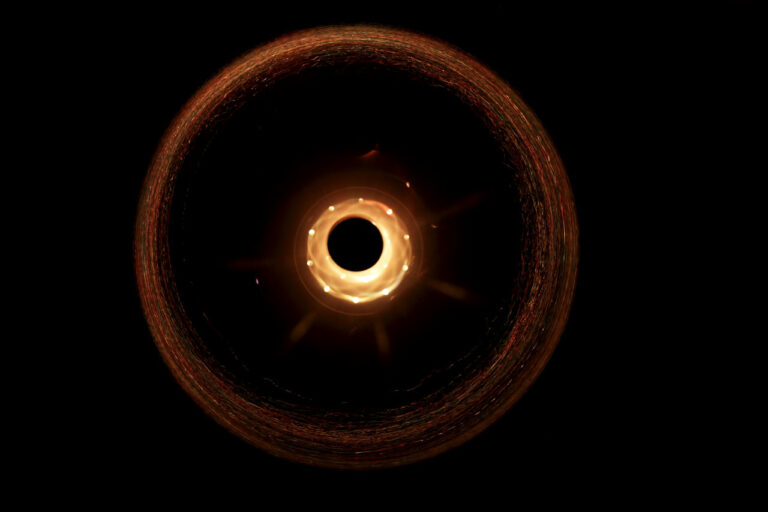Gravastars present an alternative perspective to black holes. Here’s a depiction of their appearance.
One of the key predictions of general relativity is that ultimately, gravity emerges victorious. Stars will undergo fusion reactions to create new elements in order to combat gravity and resist it for a period of time. Electrons and neutrons exert pressure to counteract gravity, but their resistance against the constant pull is limited, restricting the mass that a white dwarf or neutron star can possess. However, this can be counteracted by accumulating more mass. Once the mass exceeds approximately 3 solar masses, gravity will dominate all other forces and cause the mass to collapse into a black hole.
Despite the substantial theoretical and observational evidence supporting the existence of black holes, the concept is not without its challenges. According to general relativity, the mass collapses into an infinitely dense singularity where the laws of physics cease to apply. This singularity is shielded by an event horizon, marking a point of no return for anything consumed by the black hole. Both of these aspects pose difficulties, leading to ongoing efforts to explore alternatives that avoid singularities and event horizons.
One such alternative is a gravastar, also known as a gravitational vacuum star or gravitational condensate star. This concept, introduced in 2001, capitalizes on the idea that the majority of energy in the universe is not conventional matter or even dark matter, but dark energy. Dark energy propels cosmic expansion, suggesting that it could potentially counteract gravitational collapse in high-density environments.

The initial gravastar model proposed a Bose-Einstein condensate of dark energy surrounded by a thin shell of regular matter. The internal condensate prevents the gravastar from having a singularity, while the dense matter shell gives the appearance of a black hole from the outside. While an intriguing concept, there are two main issues. Firstly, the shell is unstable, especially if the gravastar is rotating. Although adjustments can be made to stabilize it, such perfect conditions are unlikely to naturally occur. The second problem is that observations of gravitational waves from large body mergers support the traditional black hole model. However, a new gravastar model could potentially address some of these challenges.
The new model involves nesting multiple gravastars together, similar to Matryoshka dolls. Instead of a single shell containing exotic dark energy, this model features layers of nested shells with dark energy in between. Referred to as a nestar or nested gravastar by the authors, this alternative model enhances stability by balancing the tension of dark energy with the weight of the shells. Additionally, the interior structure of the nestar results in gravitational waves that are more akin to those of a black hole, suggesting that their existence cannot be definitively ruled out.
Nevertheless, the authors themselves acknowledge that the likelihood of nestars forming is slim. It is probable that they do not exist, and it is highly likely that what we observe as black holes are indeed authentic black holes. Nonetheless, studies like this one are valuable for pushing the boundaries of general relativity, aiding in our comprehension of the possibilities within the framework of the theory and enhancing our understanding of gravitational physics.
Do not forget to share your opinion with us to provide you with the best posts !




0 Comments